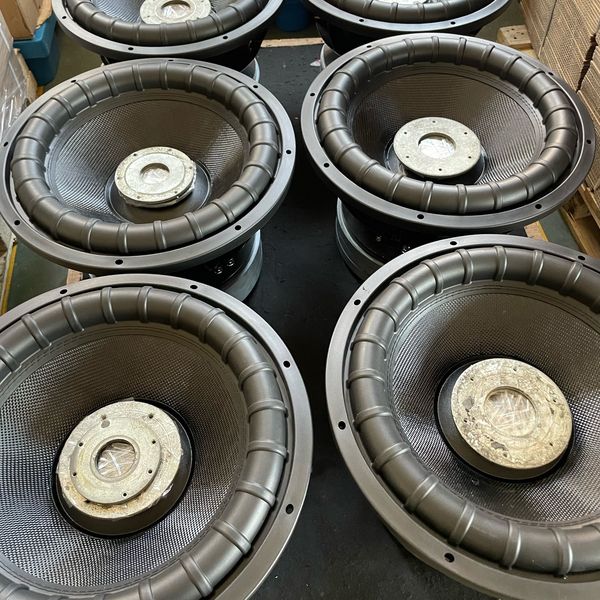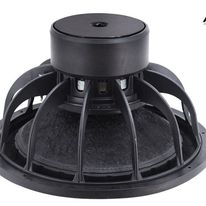Car Audio
In terms of specific applications, the requirements for car speakers and speakers used in homes, professional stages, etc. are different. Due to limitations such as the small space, limited installation location, and load power requirements, car speakers cannot simply be replaced by other speakers.
-
Classification of car speakers:
There are many classification methods for car speakers due to different perspectives. The common ones are as follows:
1. Classification by radiation:
A. Direct radiation: Sound waves are radiated directly into space by the sound-generating element.
B. Indirect radiation – sound waves are radiated from the sound-generating element to the space through the horn.
C. Headphones – Sound waves enter the eardrum from the sound-generating element through the closed air chamber (ear canal).
2. Classification according to energy conversion method:
A. Electric type
B. Electromagnetic type
C. Piezoelectric
D. Ionic type
E. Air flow modulation type
F. Electrostatic type
3. Classification according to working frequency band:
A. Low frequency speaker
B. Mid-frequency speaker
C. Tweeter
D. Full-band loudspeaker
E. Flat speaker
F. Speaker
4. Classification by structure:
A. Single paper cone
B. Composite basin
C. Horn composite basin
D. Coaxial
5. Classification according to magnetic circuit properties:
A. Ferrite magnets are composed of barium ferrite and strontium ferrite.
B. Aluminum, nickel, cobalt magnets. The magnets in the magnetic circuit are composed of aluminum, nickel, cobalt, etc.
C. Excitation type, a magnetic circuit composed of a DC excitation circuit.
6. Classification according to diaphragm shape:
A. Tapered
B. Flat shape
C. Strip shape
D. Dome shape
E. Flat membrane shape

-
Performance indicators of car speakers:
The speaker is a key component in the speaker system (commonly known as the speaker box). The sound playback quality of the speaker is mainly determined by the performance indicators of the speaker, which in turn determines the entire set of sound playback indicators. The performance indicators of speakers mainly include rated power, rated impedance, frequency characteristics, harmonic distortion, sensitivity, directivity, etc. The performance of speakers is mainly measured by the following indicators:
1. Rated power (W): The rated power of a speaker refers to the output power that the speaker can work for a long time, also known as undistorted power. It is generally marked on the nameplate on the rear end of the speaker. When the speaker operates at rated power, the voice coil will not overheat or mechanically overload, and the sound emitted will not be significantly distorted.
The rated power is an average power, but in fact the speaker works in a variable power state, which changes with the strength of the input audio signal. In weak music and sound signals, the peak pulse signal will exceed the rated power many times, due to the longer duration. Short without damaging the speakers, but distortion may occur. Therefore, in order to ensure that good sound quality can still be obtained when the peak pulse occurs, the speaker needs to leave sufficient power margin. Generally, the maximum power of speakers is 2-4 times the rated power.
2. Frequency characteristics (Hz): Frequency characteristics are an indicator of the width of the speaker’s audio frequency band. The high-fidelity sound playback system requires that the speaker system should be able to reproduce the audible sound range of 20Hz-20000Hz. Since it is difficult to achieve this sound range with a single speaker, the current high-fidelity speaker system uses three types of speakers: high, medium and low to achieve full-band playback coverage.
In addition, the frequency characteristics of high-fidelity speakers should be as flat as possible, otherwise frequency distortion will be introduced in the playback. The high-fidelity playback system requires that the frequency characteristic unevenness of the speaker within the playback frequency range is less than 3dB.
3. Rated impedance (Ω): The rated impedance of a speaker refers to the ratio of the voltage applied to the input terminal of the speaker to the current flowing through the speaker under rated conditions. The rated impedance of speakers generally includes 2, 4, 8, 16, 32 ohms, etc.
4. Harmonic distortion (TMD %): There are many kinds of speaker distortions, the common ones are harmonic distortion (mostly caused by uneven magnetic field of the speaker and distortion of the vibration system, often produced at low frequencies), intermodulation distortion (due to Two signals of different frequencies are added to the speaker at the same time, resulting in sound quality degradation due to mutual modulation) and transient distortion (because the inertia of the vibration system cannot keep up with the changes in the signal, causing signal distortion), etc.
Harmonic distortion refers to the addition of harmonic components that are not present in the original signal during playback. The harmonic distortion of the speaker comes from the non-linear distortion such as the uneven magnetic field of the magnet, the characteristics of the diaphragm, and the displacement of the voice coil. At present, the harmonic distortion index of better speakers is no more than 5%.
5. Sensitivity (dB/W): The sensitivity of a loudspeaker usually refers to the sound pressure measured 1m in front of the axial direction of the loudspeaker when the input power is a noise voltage of 1W. Sensitivity is a measure of how well a speaker can reproduce details in an audio signal. The higher the sensitivity, the better the speaker can respond to all details in the audio signal. As a Hi-Fi speaker the sensitivity should be greater than 86dB/W.
6. Directivity: The sound pressure frequency characteristics of the loudspeaker’s radiation in different directions are different. This characteristic is called the directivity of the loudspeaker. It is related to the diameter of the speaker.
When the diameter is large, the directivity is sharp, and when the diameter is small, the directivity is wide. Directivity is also related to the frequency field rate. Generally speaking, there is no obvious directivity for low-frequency signals below 250Hz. There is obvious directivity for high-frequency signals above 1.5kHz.
-
Car audio peripherals
Car EQ (equalizer, equalizer, crossover):
EQ is an audio signal processing device that controls the signal strength of different audio points/segments. Due to the small and irregular interior space of the car, various interior materials and panels absorb and reflect sound to varying degrees, making the sound spectrum reproduced by the car audio system very uneven, that is, the spectrum curve is not smooth enough. An equalizer is needed to compensate for the deficiencies in the sound system.
1. Categories of equalizer:
A. Graphic equalizer – This type of equalizer can only adjust the amplitude at a fixed center frequency and bandwidth. It is usually composed of some sliding potentiometers controlled by it. The “graph” formed by the potentiometer is like a frequency response curve. Named “Graphic Equalizer”.
B. Parametric equalizer – This type of equalizer can adjust all equalization parameters, such as amplitude, frequency, width, etc. It is generally used in racing vehicles or advanced audio systems. It is more expensive and requires professional debugging.
C. Digital equalizer, also called DSP (digital signal processing) – you can edit the parameters and curves of all frequency bands and store them in the memory to form music styles such as rock, blues, symphony, vocals, special requirements, etc. .
2. Main parameters of equalizer:
A. Signal-to-noise ratio; B. Total harmonic distortion; C. Frequency response; D. Maximum input and output level; E. Input gain; F. PFM frequency; G. Number of input and output channels (RCA); H. Input and output Impedance; I, equalizer center frequency; J, balanced input noise suppression; K, input/output impedance;
3. Equalizer functions:
A. Correct the frequency response distortion produced by audio equipment to obtain a flat response;
B. Improve clarity and naturalness;
C. Improve the unevenness produced in the car and ensure its frequency characteristics are straight.


